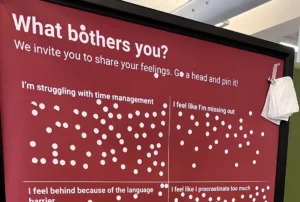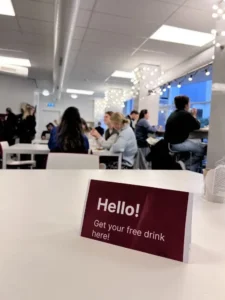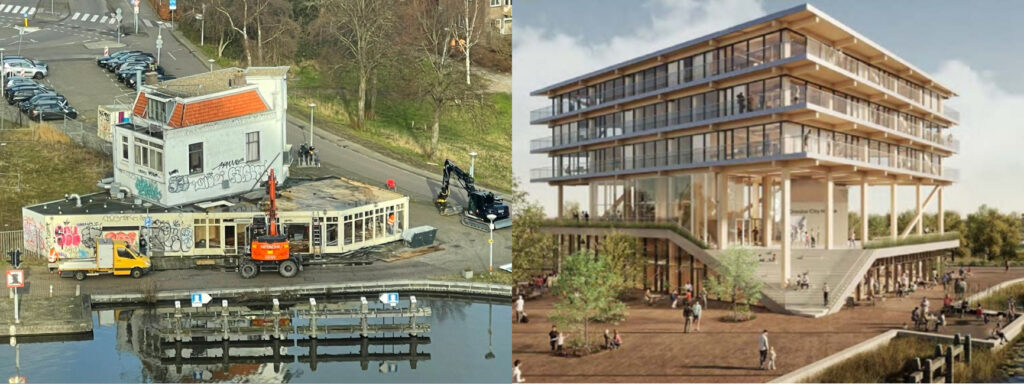Project
ONLINE STUDY SPACE 2
With Digital Society School we conducted research among students in UvA Library to discover their needs and pains towards co-study. The research took place during exam week. Students were busy, we couldn’t interfere with someone studying, and we approached them during breaks or lunch.
We had 3 touchpoints. The interview and the survey aimed to probe core assumptions. ”Feeling Board” served two purposes. Firstly, when most people describe a space or situation, they do so in terms of how it “feels.” Feelings affect how people experience space and influence their perception of that space. Secondly, while dealing with a broad group of people, it’s a challenge to attract attention, and hunt respondents in the field. ”Feeling Board” played the role of an ice-breaker or an open invitation.

Here are the main research process takeaways
- Context matters. We put one ”Feeling Board” — into the collaboration room where students study, and another into the cafeteria. Board in the collaboration room was full of responses much earlier. Statements about feelings and studying turned out to be more relevant for students in the context of actual studying. While in the cafeteria students are more relaxed, chatting with peers away from studying context.
- Look for respondents in their ”natural habitat”. To invite students to fill out the survey, we advertised signs with QR codes nearby the coffee machine, so students could participate in the research while waiting in line. Place nearby coffee point worked out way better than the same signs nearby elevators when people just passed by minding their own business.
- People tend to join groups. When students saw a group of people having a chat (interview) or interacting with the ”Feeling Board” they naturally wanted to find out what was going on and join in. The people participating in a physical experience influence perception of the experience. Seeing other active participants communicate that you also can interact and it is socially acceptable to do so.

4. Engagement hooks. Being already engaged in one activity made students open to participating in another as well. Interact with the board? Ok, why not fill in the survey? Let’s do it! And vice-versa. Also, it helped us to invite some of them in for the interview, more than hunt for respondents somewhere in the library halls.
5. Incentives are king! Even small things like a free coffee from the coffee machine in the cafeteria help to warm people up and start one of the most powerful advertising in the world — word of mouth. For the interview we offered a 5-euro grocery card.
Last but not least take away — analyze the research process every moment, to be ready to adjust it accordingly to the situation and target group response.


